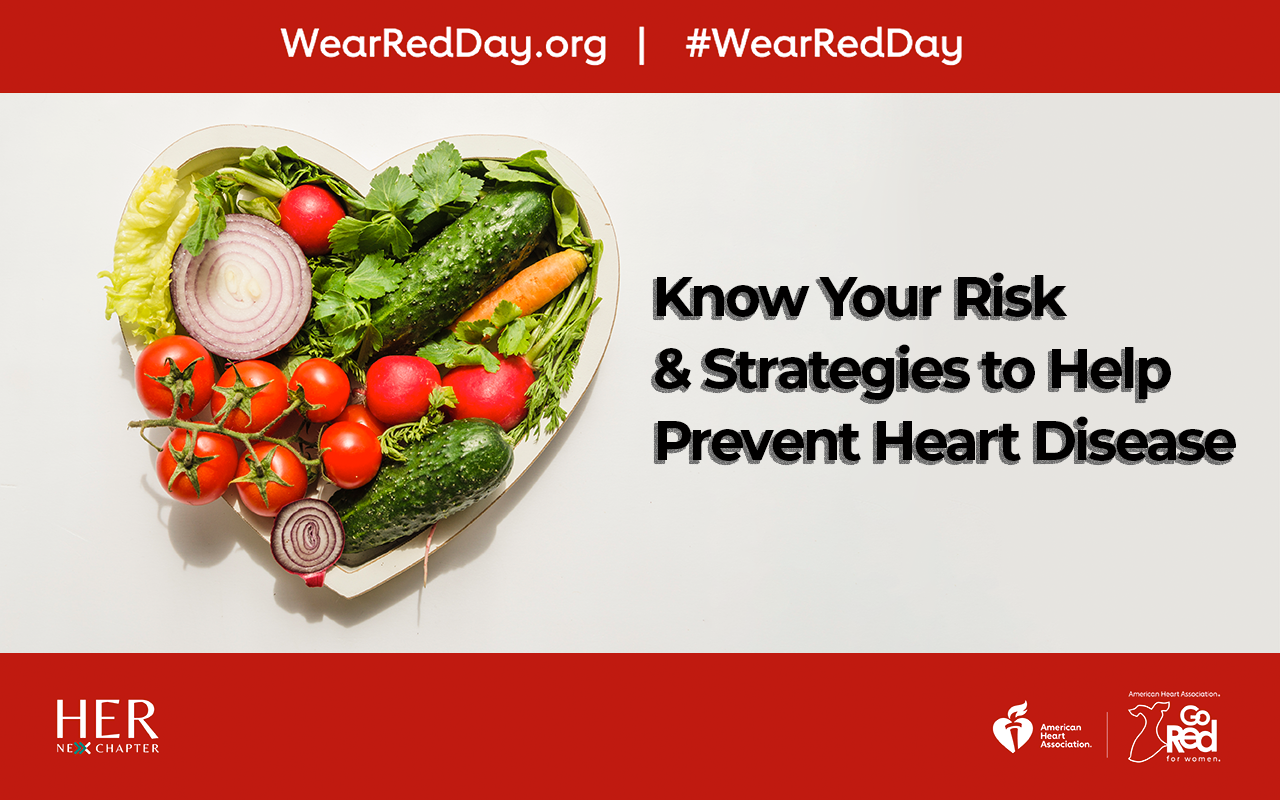I first learned about heart disease when my dad had a stroke. He was in his mid-60s, and I remember him saying that he’d been having chest discomfort for years but didn’t think much of it because it was “just indigestion.” Then, after a year of declining health, my dad passed away from myocarditis, an inflammation of the heart muscle. My mom told me that she knew something wasn’t right with his health — he had lost considerable weight and was lethargic, inactive, and was having difficulty managing his blood sugar. But she never thought anything would happen until it did.
My dad was fortunate to live a rewarding life, fulfilling his role as a provider for his family and serving his country as a proud Marine. Yet, I wondered how he could have improved the quality of his life by addressing modifiable risk factors sooner.
Heart disease is common in the African American community. According to the Centers for Disease Control (CDC), Black men are twice as likely to have coronary artery disease compared to White men. In addition, Blacks are three times more likely to suffer from a stroke than Caucasians.
Research indicates that multiple factors can increase the risk of cardiovascular disease (CVD), such as social determinants like socioeconomic status, your zip code, access to affordable healthcare and housing security. As the scientific community learns more about what causes CVD, emerging evidence suggests a comprehensive approach that looks at societal, environmental, systemic and chronic problems, such as persistent psychosocial stress, excessive alcohol intake, unhealthy diets, and high blood pressure, is needed in the prevention and treatment of CVD.
These statistics show how important it is to be aware of your risk factors so you can take steps to prevent or delay the onset of an acute event like a stroke or heart attack.
Are you listening to your heart?
When was the last time you thought about your heart? If it’s been a while, then take some time to think about what makes this muscle function optimally. The next step will be to find out if any changes in your health could affect your heart or make it vulnerable to disease or injury. This can include high blood pressure, diabetes, obesity, smoking, stress, poor diet, and lack of exercise. Once you identify your risk factors, take action. Your medical provider might assess your risk using lab tests that could include high-sensitivity C-reactive protein, a complete blood count, and a lipid panel with triglycerides and cholesterol.
Cholesterol is a waxy substance found naturally in all cells. Cholesterol plays many essential roles in maintaining good health, including the manufacturing of cell membranes, hormones, vitamin D, bile acids, and other substances.
High cholesterol, however, can signal a build-up of plaque on the artery walls, which narrows or blocks blood flow. As a result, vital organs are deprived of oxygen-rich blood and those obstructions in the arteries may lead to a heart attack or stroke.
Be a friend to your heart
Heart disease may be the leading cause of death in America, but you can lower your risk. For one, nutrition is the key to a healthy heart. Eating a well-balanced diet with lots of fruits and vegetables, lean proteins, whole grains, and low-fat dairy products will help lower cholesterol while supplying you with essential vitamins and nutrients for overall health. Adopting a healthier eating pattern is a great way to show your heart some love.
The following are more specific recommendations for keeping your heart in tip-top shape:
1. Eat at least five servings, and a colorful array, of fruits and vegetables daily.
Eating a variety of plant-based foods, such asfruits and vegetables, are essential to improving your blood flow and overall health as they contain an abundance ofantioxidants and anti-inflammatory properties. By adopting this nutritional intervention, those with chronic diseases may lower levels of oxidative stress and reduce the inflammatory burden that often accompanies CVD and other chronic conditions. I like to encourage clients to eat at least one fruit or veggie with each meal, and to “eat the rainbow.” Get creative by juicing fruits and vegetables or combining them into a smoothie. Before you know it, you’ll have exceeded your daily quota.
2. Eat foods rich in omega-3 essential fatty acids, such as fish, nuts, and seeds.
The American Heart Association (AHA) recommends consuming at least two servings of oily fish per week (about 250 mg/day) as part of any dietary pattern. The benefits are thought to be due to the high content of omega-3 fatty acids, which help lower blood pressure and cholesterol levels. Omega-3 fatty acids can also be found in a high-quality fish oil supplement or flaxseed oil, as well as monounsaturated fat like olive oil, avocados, nuts, and seeds. When cooking, avoid usingtrans fatslike shortening or margarine, which are most strongly associated with the risk of CVD and adverse health outcomes.
3. Move your body with intention at least five days a week for 30 minutes.
Exercise can support cardiovascular health through several mechanisms. For one, movement increases the production of nitric oxide (NO), which is an important vasodilator that helps blood vessels relax and widen. Regular physical activity may also prevent atherosclerosis by reducing inflammation in arteries. The AHA recommends at least 30 minutes of aerobic activity per day on most days of the week. The good news is that there are many forms of activity from which to choose, including walking, rebounding, jogging, swimming, gardening, cycling, and dancing. Choose an activity you enjoy so you’ll be inspired to keep going and make it a routine part of your day.
It’s important to find a balance between maintaining a healthy diet, addressing nutrient deficiencies, and achieving the recommended amount of exercise. Knowing your family history and thinking about your future can serve as motivators when making healthy lifestyle changes.
An adage says that “we spend our entire lives sacrificing our health to gain money. And then when we get to retirement years, we sacrifice all of our money to try and regain our health.” As you’re planning for the future, be sure to make regular deposits into your wellness retirement plan. In time, your heart — and your family — will thank you.
The American Heart Association and Her Nexx Chapter, Inc. are collaborators in strategic initiatives to advance health equity and ensure All Americans have an opportunity for a full, healthy life.
We invite you to join our free Community where women from around the world are connecting with each other’s stories, exploring different experiences, and transforming ideas.
The Future of Connection for Women
Follow us:







